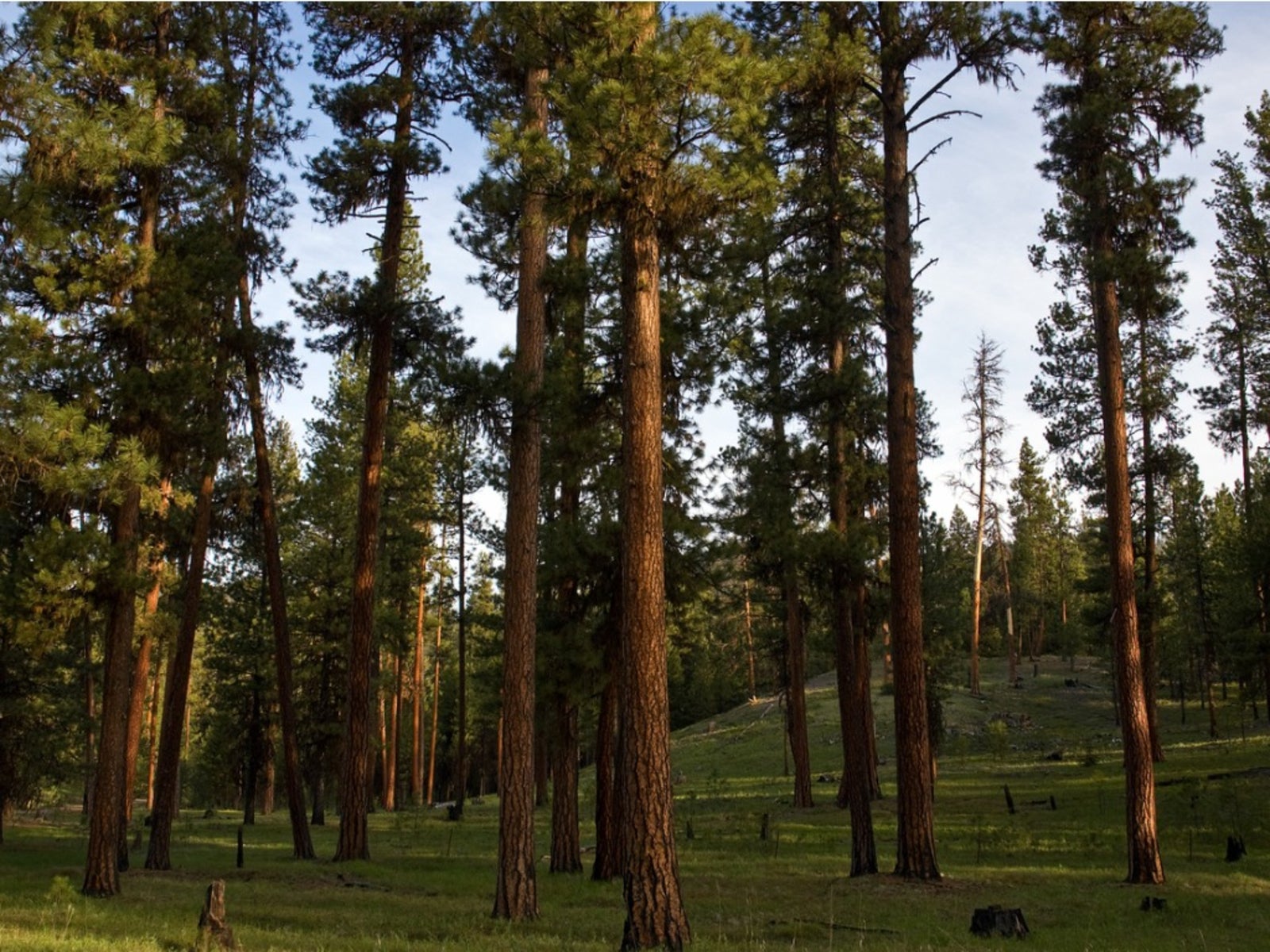Ponderosa Pine Facts: Tips For Planting Ponderosa Pine Trees


If you are looking for a pine that hits the ground running, you may want to read up on ponderosa pine facts. Hardy and drought resistant, ponderosa pine (Pinus ponderosa) grows rapidly, and its roots dig deep into most types of soil.
Ponderosa Pine Facts
Ponderosa pines are large trees native to the Rocky Mountain region of North America. A typical cultivated ponderosa pine grows to around 60 feet (18 m.) tall with a branch spread of about 25 feet (8 m.). Planting ponderosa pine trees requires a big backyard. The lower half of the straight trunk is bare, while the top half has branches with needles. Needles are stiff and between 5 to 8 inches (13-20 cm.) long. The bark of the ponderosa pine is orange-brown and looks scaly. Ponderosa pine trees flower in spring of their first year. They produce both male and female cones. The female cones release their winged seeds in autumn of the tree’s second year.
Planting Ponderosa Pine Trees
Ponderosa pines are known for the speed with which they drop roots into soil. For that reason, they are often planted for erosion control. It helps that they tolerate most soil types, shallow and deep, sandy and clay, as long as it is at least slightly acidic. Attracted by the pine’s lush green needles and fresh fragrance, many gardeners are planting ponderosa pine trees in backyards and gardens. Most gardeners can consider planting these pine trees since they thrive in USDA hardiness zones 3 through 7.
Ponderosa Pine Tree Care
If you want a do-it-yourself tree planting experience, collect ponderosa pinecones in late fall when they turn reddish brown. This is likely to happen in October or November. The hard, brown seeds will drop from the cones if you dry them on a tarp in a well-ventilated area. You can use them for growing ponderosa pines. Alternatively, purchase a young ponderosa pine from your garden store. Ponderosa pine care is easier if you plant the tree in a sunny location on loamy, well-drained soil. Don’t neglect water in the period of establishment when you are growing ponderosa pines. Young pines don’t appreciate water stress, although mature specimens are drought tolerant. Planting ponderosa pine trees is a good investment. When you look into ponderosa pine facts, you find that these trees can live and thrive for up to 600 years.
Gardening tips, videos, info and more delivered right to your inbox!
Sign up for the Gardening Know How newsletter today and receive a free copy of our e-book "How to Grow Delicious Tomatoes".

Teo Spengler is a master gardener and a docent at the San Francisco Botanical Garden, where she hosts public tours. She has studied horticulture and written about nature, trees, plants, and gardening for more than two decades. Her extended family includes some 30 houseplants and hundreds of outdoor plants, including 250 trees, which are her main passion. Spengler currently splits her life between San Francisco and the French Basque Country, though she was raised in Alaska, giving her experience of gardening in a range of climates.
-
 Looking For Plants To Give You The Soft And Fuzzies? Try These 5 Fuzzy Leaf Plant Options
Looking For Plants To Give You The Soft And Fuzzies? Try These 5 Fuzzy Leaf Plant OptionsLovers of texture, drama, silver foliage and tactile plants will adore these special sensory garden additions. These fuzzy leaf plant options will leave you all aglow
By Susan Albert
-
 Get Ready For A Summer Of Hummers! Grow These Full Sun Hummingbird Plants and Flowers
Get Ready For A Summer Of Hummers! Grow These Full Sun Hummingbird Plants and FlowersIf you’re lucky enough to enjoy a sunny backyard, make sure you are maxing out on your pollinator opportunities and grow these full sun hummingbird plants and flowers
By Tonya Barnett